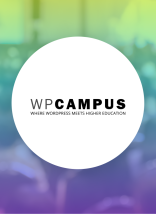If your website is not responsive, not accessible, not performant (mobile included), or leveraging outdated or insecure technology, it may be a sign that your website is outdate. This can give the impression that your business is not reliable or trustworthy. In such cases, it’s crucial to consider the services of a company specializing in website development to ensure your site is up-to-date and effective.
Outdated websites that are not compatible with modern web browsers and devices can lead to poor user experiences. This can include issues such as slow loading times, broken features, and security vulnerabilities. And since users expect websites to be reliable and functional, these issues can be frustrating and off-putting.
Add to this the fact that old, outdated websites may not comply with modern web design and accessibility standards – such as a website that doesn’t use responsive web design principles. It may not display properly on mobile devices, or if it doesn’t comply with accessibility standards it may exclude users with disabilities.
You may think that because your website still seems okay, it’s okay to not update things. But in today’s competitive digital landscape, businesses need to prioritize their core web vitals and ensure that their website development is up-to-date and user-friendly. Without it, there’s a chance you could drive potential customers to choose a competitor’s website instead.
Based on our 25 years of website development experience, here are four main things that make a site look outdated:
Non-Responsive Website
In 2024, non-responsive website development is no longer acceptable because of the increasing number of users accessing the internet through their mobile devices. With the proliferation of smartphones and tablets, users expect websites to be mobile-friendly and responsive.
A responsive website adapts to different screen sizes and devices, ensuring that the user experience remains consistent across all platforms.
Non-responsive websites require users to zoom in and out or scroll horizontally to view content, leading to a clunky and frustrating experience. This gives the impression that a business is out of touch with modern technology and trends, which can negatively impact its reputation and credibility.
To address and fix non-responsive websites in 2024, businesses need to prioritize working with a website development company who has experience with mobile-first design principles. This means website development with the mobile user in mind and ensuring that the website functions seamlessly on all devices. This ensures that the user experience is consistent, regardless of the device they are using to access the website.
Another approach is to use modern website development technologies, such as CSS Grid and Flexbox, to create layouts that are flexible and can adapt to different screen sizes. Developers can also leverage frameworks and tools such as Bootstrap and Foundation to build responsive websites quickly and efficiently.
Accessibility
When you don’t run your website through tools to measure accessibility you are potentially limiting your audience. Accessibility is a growing concern due to government legislation, contractual requirements, and more widespread news and information about the business value of digital accessibility. Not to mention it just makes sense.
Website development companies are now using tools like Google Lighthouse to measure website SEO, Performance, and Accessibility. You may also see accessibility referenced as a11y in your browsing.
Needless to say it’s important that your website needs to be accessible!
Slow Loading Speed
Slow-loading websites are also a problem when it comes to outdated features. Users expect websites to load quickly, and if a website takes too long to load, they may become frustrated and may abandon the website altogether. This can result in a high bounce rate, lower engagement, and fewer conversions. Additionally, with Google’s focus on page speed as a ranking factor, slow-loading websites may suffer from lower search engine rankings, leading to even fewer visitors and traffic.
To avoid these problems, website development agencies need to prioritize website speed and performance when building and optimizing websites. This can include optimizing images and media, minimizing the use of large files and complex scripts, leveraging caching and compression techniques, and using a fast and reliable web hosting service. Using a content delivery network (CDN) can also help to distribute website content across multiple servers, resulting in faster load times for users.
Old Technology
Finally, using outdated technology on a website can make it look bad and even be dangerous.
While outdated technology may not be compatible with modern web browsers and devices, leading to a poor user experience, what’s worse is that it can also lead to security vulnerabilities. Technology, such as Flash, which is no longer supported by many modern web browsers can pose security risks to users, for example. Similarly, using outdated coding languages or frameworks can result in slower performance and limited functionality.
To avoid these problems, developers and designers should stay up-to-date with the latest web development technologies and design trends. This can include using modern programming languages and frameworks such as HTML5, CSS3, and JavaScript. These technologies provide more advanced features and better performance, resulting in a better user experience.
If you’re looking to update your website and ensure that it meets the latest technical standards, consider Atlantic BT as your website development partner. We have 25+ years of experience in website development and design. We can help your business to modernize its website and provide a seamless user experience that engages and converts visitors.







